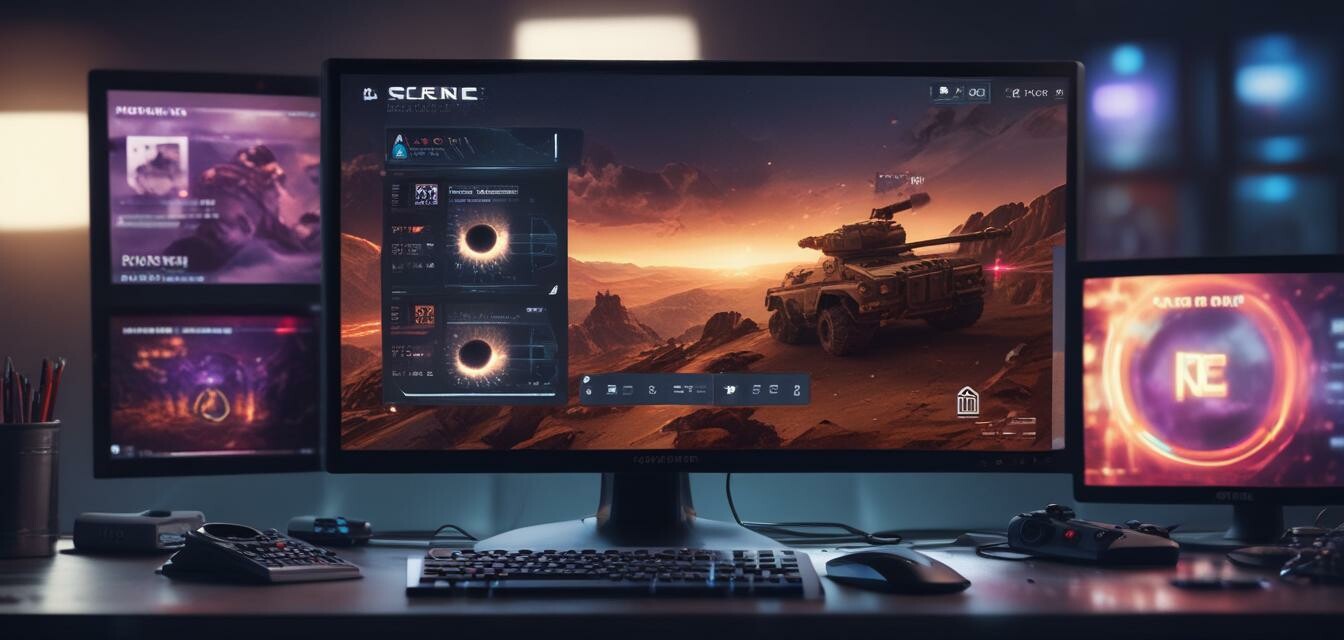
Understanding Refresh Rates: What Every Gamer Should Know
Key Takeaways
- The refresh rate is a crucial factor that influences gaming performance and visuals.
- A higher refresh rate leads to smoother gameplay and a more responsive experience.
- Understand different types of refresh rates such as 60Hz, 120Hz, 144Hz, and more.
- Consider factors like graphics card capabilities when choosing a monitor.
- Refresh rates impact the overall gaming experience across various genres.
When it comes to gaming, every detail matters, and refresh rates are among the most critical specs you should familiarize yourself with. If you're looking to enhance your gaming setup, understanding refresh rates can optimize performance and elevate your overall gaming visuals. In this guide, we'll explore what refresh rates are, their significance for gamers, and how to select the best option for your needs.
What is a refresh rate?
The refresh rate, measured in Hertz (Hz), indicates how many times your monitor updates the image per second. For example, a refresh rate of 60Hz means the display refreshes the image 60 times within one second. Higher refresh rates mean smoother transitions and less motion blur, which are crucial in high-paced gaming environments.
Common refresh rate values
| Refresh Rate (Hz) | Typical Use |
|---|---|
| 60Hz | Standard gaming and general use |
| 120Hz | Casual gaming, enhances visuals and responsiveness |
| 144Hz | Competitive gaming, offers a significant edge |
| 240Hz and above | High-end gaming, extreme smoothness and response |
Why does refresh rate matter for gamers?
Understanding refresh rates can drastically change your gaming experience. Here are a few reasons why gamers should pay attention to refresh rates:
- Smoother gameplay: Higher refresh rates contribute to a more fluid gaming experience, reducing motion blur and enabling quicker responses to in-game actions.
- Enhanced visuals: A higher refresh rate provides clearer images during fast-paced scenes, making it easier to spot opponents or navigate through complex graphics.
- Less input lag: The lower the refresh rate, the higher the input lag. Higher refresh rates ensure that your actions are displayed almost instantaneously on screen, which is crucial in competitive gaming.
How do refresh rates affect different game genres?
Different types of games can benefit from higher refresh rates in various ways:
- First-Person Shooters (FPS): In FPS games, every millisecond counts. A higher refresh rate can give players a significant edge by providing a smoother view of the action.
- Racing Games: Racing games heavily rely on quick reflexes and precise controls. A higher refresh rate helps with a more immersive experience, making it easier to navigate dangerous turns.
- Role-Playing Games (RPG): While RPGs may not require the highest refresh rates, a smoother frame rate enhances the gaming experience, especially in action-oriented segments.
Choosing the right refresh rate for your setup
When selecting a gaming monitor, it is crucial to look beyond just the refresh rate. Here are some factors to consider:
- Graphics Card Capability: Ensure your graphics card can support your desired refresh rate. High refresh rates require powerful hardware.
- Resolution: A higher resolution may slightly limit your performance. Balance between resolution and refresh rate based on your gaming priorities.
- Monitor Technology: Look for displays with technologies like G-Sync or FreeSync to minimize screen tearing and ensure smooth gameplay.
Final thoughts on refresh rates
Understanding refresh rates and how they affect your gaming experience can make a significant difference. The right refresh rate will enhance your visuals, improve your responsiveness, and ultimately lead to a more satisfying gameplay experience. Make sure to explore gaming monitors that suit your needs and budget.
Pros
- Significantly improves the gaming experience.
- Reduces motion blur and input lag.
- Offers clearer visuals during fast-paced gameplay.
Cons
- Higher refresh rate monitors can be more expensive.
- Requires a powerful graphics card to utilize fully.
- Not all gaming genres may benefit equally from high refresh rates.
Tips for beginners
- Always match your monitor's refresh rate with your graphics card capabilities.
- Consider investing in G-Sync or FreeSync compatible monitors for better performance.
- Check gaming forums for specific monitor recommendations for the games you play.
If you're curious to learn more about gaming gear, check out our Buying Guides for expert advice on the best gaming gear.
To keep up with the latest in the gaming world, join us in our News and Trends section.
